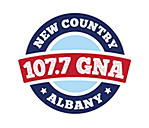
You Need to Stop Ignoring Air Quality Alerts in New York
Since the beginning of this stretch of muggy, hot, and downright uncomfortable days of 90+-degree weather we've seen in the Hudson Valley, New York State has issued multiple air quality alerts and advisories for the area.
To many, these advisories have become almost unnoticeable during the morning forecast reading. The last time people really seemed to care about the air quality alerts was when the sky actually turned orange across New York resulting from the wildfires in Canada.
It's pretty hard to ignore a warning when it's that visible. But what do these air quality alerts really mean on a day-to-day basis? And how dangerous are they?
Levels of Air Quality Alerts in New York State
An air quality alert is based on the predicted AQI (Air Quality Index) for any given day. The AQI essentially measures levels of polluted air. Different pollutants that the DEC monitors to help determine the AQI include carbon monoxide, nitrogen oxides, methane, fine particles, ozone, and sulfur dioxide.
Ozone refers specifically to ground-level ozone, made up of human-made emissions like the emissions from cars and factories.
Hudson Valley Air QualityHealth Advisory
On Monday, July 8th, the AQI was at a 74 for the lower Hudson Valley and a 50 for the Upper Hudson Valley.
The DEC considers the lower Hudson Valley to be Dutchess, Orange, Putnam, Ulster, and Sullivan. The Upper Hudson Valley is outlined as Albany, Columbia, Fulton, Greene, Montgomery, Rensselaer, Saratoga, Schenectady, Schoharie, and Washington.
A 74 put the lower Hudson Valley in the yellow zone on the AQI scale, meaning the air quality was moderately acceptable, but those sensitive to air pollutants might have extra discomfort and risk. These sensitive populations include people with known lung diseases, children, pregnant people, and the elderly.
On Tuesday, July 9th, an air quality health advisory was issued for parts of New York State including the New York City Metro area and the Lower Hudson Valley region.
The AQI for Tuesday is at 101 for the lower Hudson Valley, leaping over the Yellow Zone and putting it in the Orange Zone. The main culprit for the negative air quality is the ozone pollutant.
The Orange Zone denotes a risk for sensitive groups. The "sensitive groups" list also expands to, "people with lung disease such as asthma, older adults, children and teenagers, and people who are active outdoors."
Can Low AQIs Cause Health Problems?
According to the American Lung Association, consistent exposure to bad AQIs can have real long-term health effects.
In 2013, the World Health Organization determined that lung cancer, the #1 cause of cancer-related deaths in the US, can be caused by exposure to partial pollution. Healthy children exposed to pollutants in the air are susceptible to chest and lung infections which can even stunt lung development.
For pregnant people, too much exposure to poor air quality leads to low birth weights for infants and even contributes to infant mortality.
While air quality alerts seem to flash on our screens without a ton of thought, it's extremely important to pay attention to these alerts whether you're part of a sensitive group or not.
What to Do During Low Air Quality Days
If the AQI is between 0 - 100, most people are fine to carry out their typical outdoor exposure with the exception of young kids, the elderly, pregnant people, and those with known lung conditions.
For the current Orange Zone air quality conditions, AirNow recommends that if you are a young child, older adult, or pregnant person, it is advised that you limit outdoor activity. If you need to be outside, try to limit your exposure to the morning hours when ozone pollutants are lower.
If you have a lung condition like asthma, it is advised that you keep rescue inhalers and medications handy while monitoring symptoms and limiting your outdoor exposure.
What is the Worst AQI New York Has Seen?
During 2023's Canadian Wildfire smoke, New York's AQI surpassed 300, putting it in the most severe zone, the Maroon Zone.
If the AQI were to ever reach this point again, all outdoor activity should be limited for all persons and those with lung conditions should basically not leave the house.
Beyond the air quality, heat is also a concern around New York currently. Here are some symptoms to keep note of during New York's heat waves.



